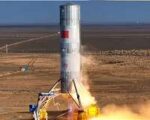The United States and Ukraine are reportedly coordinating the transfer of Tomahawk land-attack cruise missiles (LACMs) to Kyiv—a development that would significantly expand Ukraine’s ability to conduct deep-strike operations against Russian military infrastructure. The potential deployment of these advanced munitions marks a pivotal evolution in Western military assistance and could reshape operational dynamics across the theater.
Tomahawk Overview: A Proven Long-Range Precision Weapon
The Tomahawk Land Attack Missile (TLAM), developed by Raytheon and fielded by the U.S. Navy since the 1980s, is a subsonic cruise missile designed for precision strikes against high-value targets at extended ranges. The latest Block IV variant (also known as RGM/UGM-109E) offers a range exceeding 1,600 km and features in-flight retargeting via satellite link and terrain contour matching navigation (TERCOM/DSMAC).
Key specifications include:
- Length: ~5.56 m
- Warhead: ~450 kg unitary warhead (penetrator or blast-fragmentation)
- Propulsion: Williams International F107-WR-402 turbofan engine
- Launch platforms: Surface ships (VLS), submarines (torpedo tubes/VLS), some air-launch variants tested but not fielded
The missile’s low radar cross-section and terrain-hugging flight profile make it difficult to intercept with conventional air defense systems—an attribute that would be especially valuable for Ukraine in penetrating dense Russian IADS networks.
Strategic Implications for Ukraine’s Deep Strike Capability
If confirmed and implemented operationally, the delivery of Tomahawks would represent a quantum leap in Ukraine’s ability to strike Russian military targets far beyond the front lines—potentially including command centers, logistics hubs, airbases, and radar installations located hundreds of kilometers inside Russian territory or occupied Crimea.
This capability would complement existing Ukrainian long-range assets such as Storm Shadow/SCALP-EG air-launched cruise missiles (ALCMs), ATACMS tactical ballistic missiles recently delivered by the U.S., and domestically produced drones like the “Beaver” UAV. However, unlike Storm Shadow or ATACMS—which are launched from aircraft or HIMARS respectively—the Tomahawk requires dedicated launch infrastructure typically found on naval platforms or adapted ground-based vertical launch systems.
There is no public confirmation yet on how Ukraine would deploy these weapons—whether via shipborne VLS cells retrofitted onto patrol vessels like those transferred under UK-Ukrainian defense cooperation agreements (e.g., Island-class cutters), via ground-based launchers adapted from NATO-standard containers (similar to Polish use of Mk41 VLS), or potentially even through covert maritime platforms.
Legal and Political Constraints on Use
The Biden administration has historically imposed restrictions on how donated long-range systems can be used—particularly concerning strikes inside Russia proper. For example, Storm Shadow deliveries were accompanied by informal understandings that they be used only within occupied Ukrainian territory such as Crimea. However, recent ATACMS strikes on Russian airfields in Luhansk and Berdyansk suggest a gradual loosening of these constraints.
If Tomahawks are transferred under similar conditions—with geographic use restrictions—it may limit their strategic impact. But if permitted for use against targets within Crimea or even deeper into Russia’s rear areas supporting aggression against Ukraine, they could serve both kinetic and psychological deterrent roles. Moscow has previously warned that such escalations could provoke retaliation—but its responses have so far remained conventional.
Delivery Timeline and Integration Challenges
No official timelines have been disclosed regarding when Ukraine might receive operational Tomahawks or begin training personnel for their deployment. Integration challenges include:
- Platform compatibility: Adapting existing Ukrainian naval or land platforms to accommodate VLS modules or containerized launchers
- C4ISR integration: Ensuring targeting data from ISR assets is compatible with TLAM mission planning systems
- Sustainment/logistics: Establishing secure supply chains for missile maintenance and reloads under wartime conditions
- Tactical doctrine development: Incorporating deep-strike cruise missile tactics into joint fires planning alongside UAVs and TBMs
The U.S. has previously provided limited numbers of older Block III TLAMs to allies such as Australia for test purposes; however, this would mark the first combat deployment outside NATO if confirmed.
A Broader Shift Toward Strategic Deterrence Posture
The prospective provision of Tomahawks aligns with a broader trend in Western military aid toward enabling Ukraine not just to defend but also to impose costs on aggressors at strategic depth. The move follows deliveries of precision-guided munitions like JDAM-ER kits, GLSDBs (Ground-Launched Small Diameter Bombs), ATACMS variants with cluster warheads, and advanced ISR assets including RQ-20 Puma UAVs and commercial SAR satellites.
This shift reflects growing recognition among NATO partners that static defense is insufficient—and that credible deterrence requires offensive reach capable of disrupting enemy logistics chains before they reach the battlefield. In this context, Tomahawks serve both symbolic and practical functions: signaling Western resolve while offering real targeting options against hardened nodes like S-400 batteries or Black Sea Fleet facilities.










